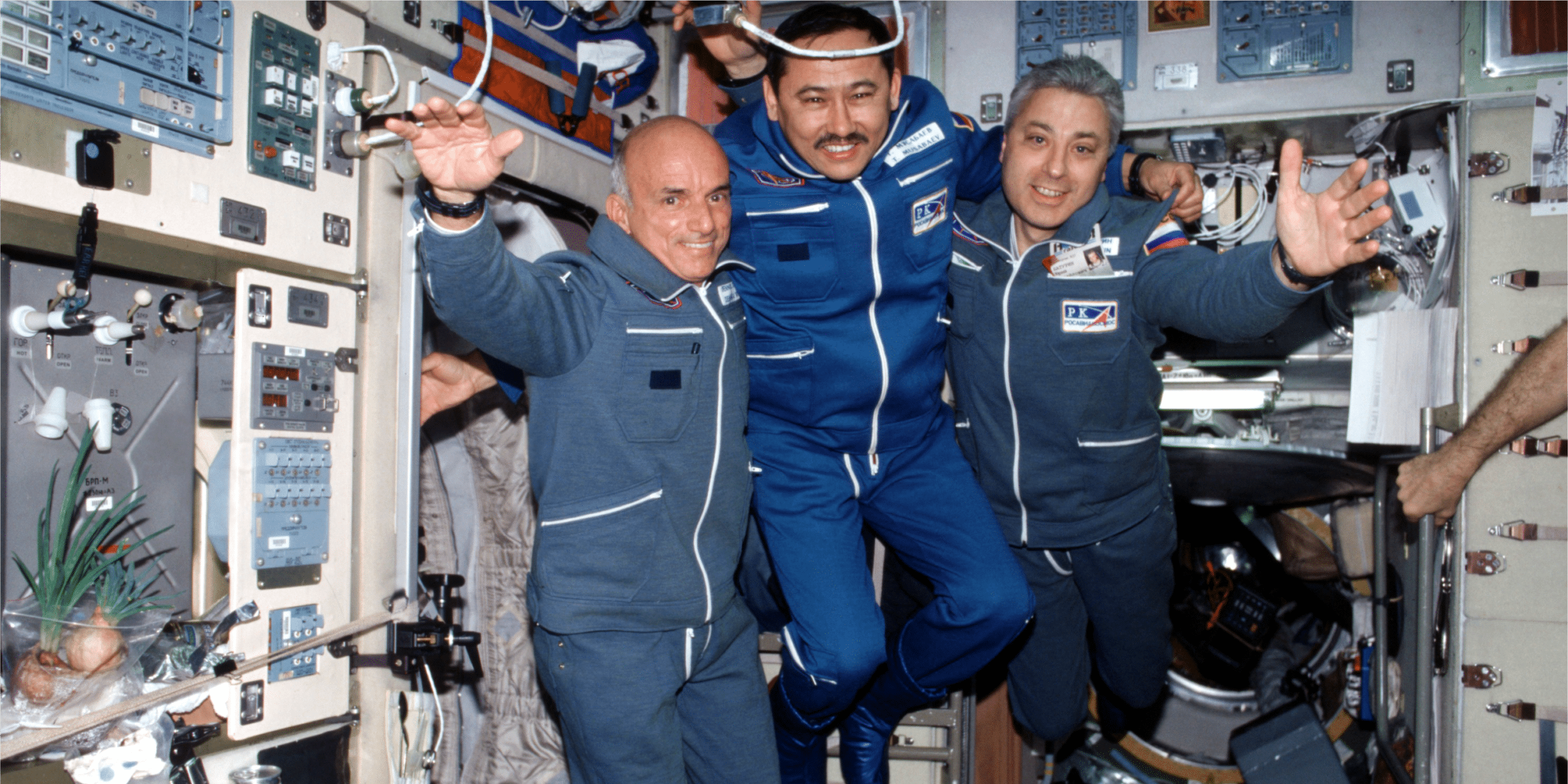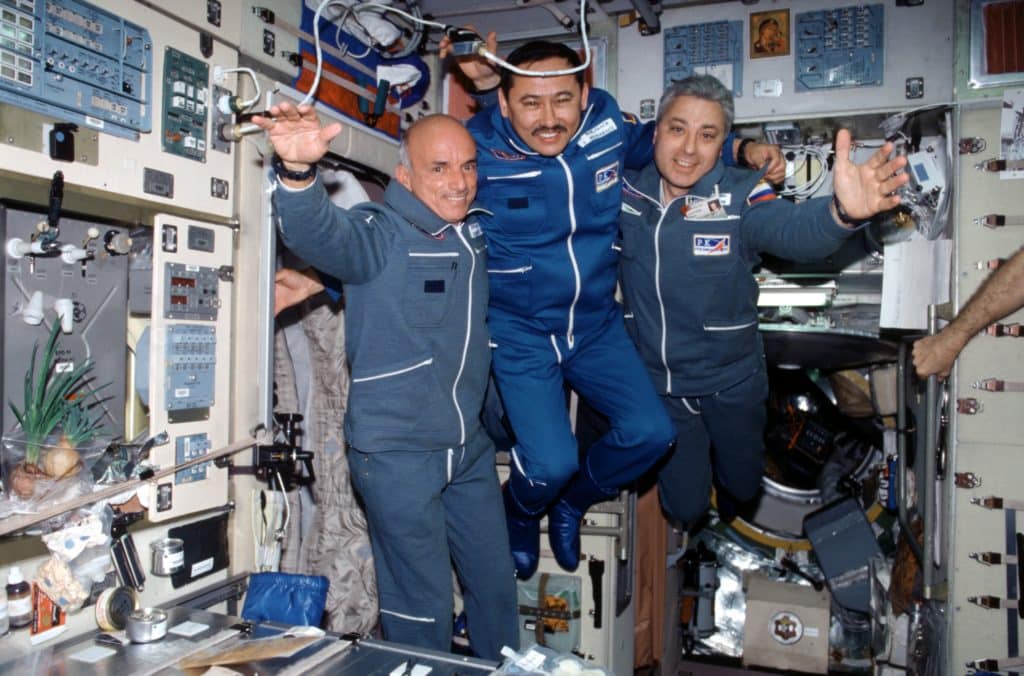A Look Back
Let’s start by saying that nothing worthwhile comes easy. We’re celebrating the 20th anniversary of Dennis Tito’s spaceflight. He made history by becoming the first fare-paying private citizen to launch to space. But the road that he traveled to get there was full of challenges.
Cast your mind back 20 years ago to April 2001. Some of you reading this may not have been born. The September 11th attacks on the United States had not yet happened. The iPod was months away from launch, but Wikipedia had just gone live. Barry Bonds was just warming up for his steroid-fueled home run tear. George W. Bush was only in his 3rd month of his presidency and Vladimir Putin just assumed office.
Chance of a Lifetime
That was the world when former JPL engineer Dennis Tito, at 60 years of age, was offered the chance to fulfil his lifelong dream. Dennis long believed in space exploration. Eric Anderson had a dream too. He, like Dennis, wanted to launch to space. Unfortunately, poor eye sight prevented Eric from pursuing that dream. But Eric had been rethinking space exploration and came to the conclusion that it shouldn’t be for just former fighter pilots from the ‘Right Stuff’ era.
Soon after Eric graduated from college, he co-founded Space Adventures with a few like-minded individuals. Their mission was to open the space frontier to all. That was 1998. Eric thought that Space Adventures’ first customers would launch to space on suborbital flights. He was not expecting to launch a tourist all the way to low-Earth orbit, but that’s what happened.
“Human interest in exploring the heavens goes back centuries. This is what human nature is all about.”
– Dennis Tito
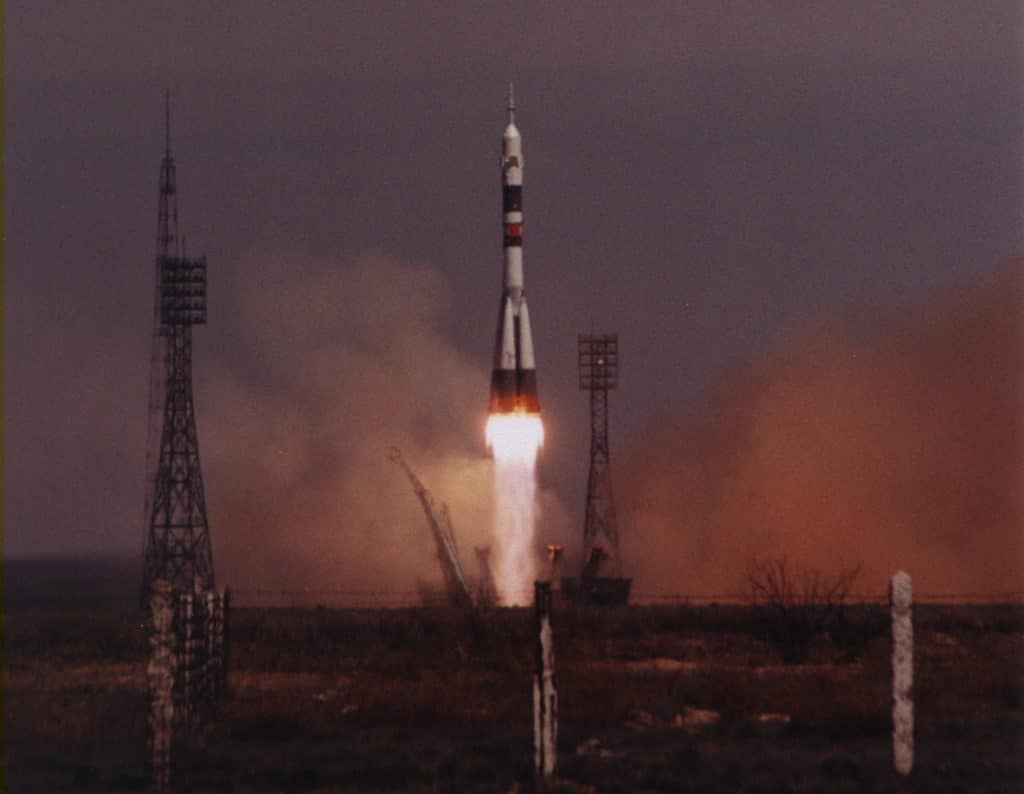
Soyuz launch from Baikonur Cosmodrome
Challenges at Every Step
Even with the support of the Russian space agency, including his crew members, the road to launching Dennis Tito to space would prove to be very difficult. Luckily, Dennis is a very determined individual. With every challenge that Eric and Dennis faced together, they did not waver.
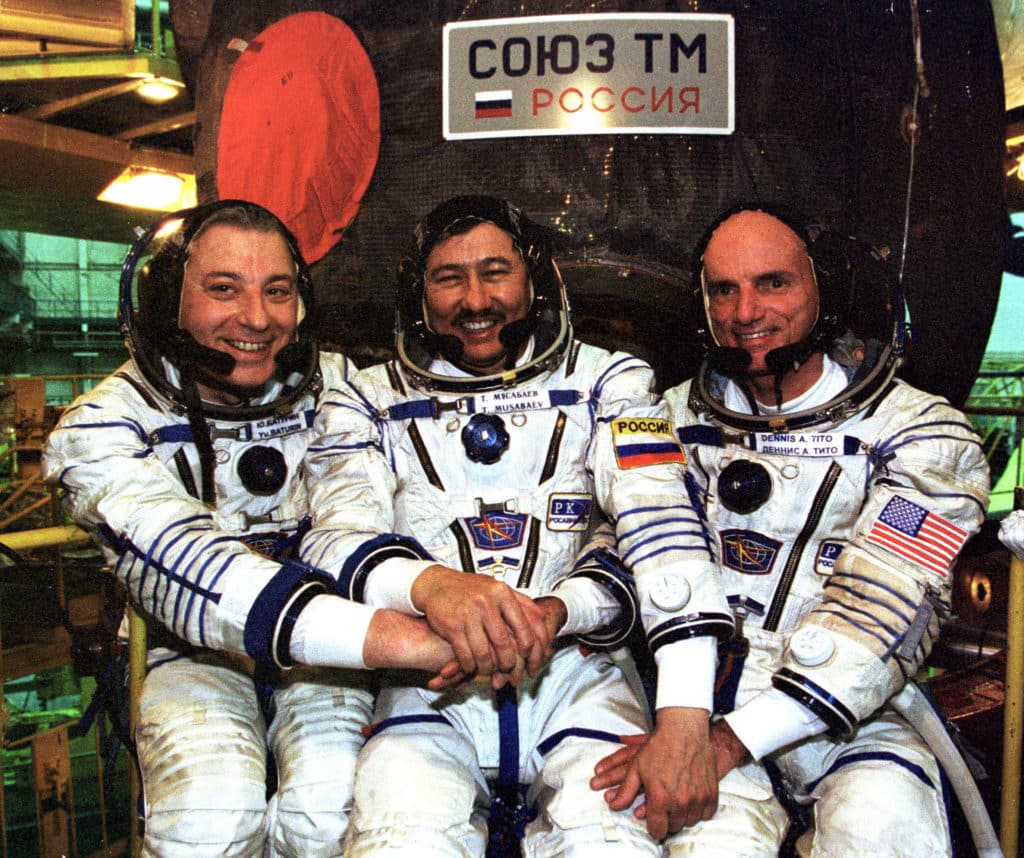
Support from Dennis Tito’s crew was immense
This mission was to be groundbreaking – the first time that a self-funded civilian was to launch to space. Dennis was to visit the International Space Station that was brand new and still under construction. When Eric first approached the Russians with the idea of flying a non-professional to space they said that no one would pay the price to fly. Eric told them that he already had a client. The officials at Roscosmos were astonished.
Now, you have to remember, no one had an idea of the value of spaceflight. No market studies had ever been published. SpaceShipOne was years away from flight and SpaceX wasn’t even founded yet. Commercial spaceflight, let alone space tourism, was just in the ether. But this was a window of opportunity — a chance to make something otherwise impossible real. And Eric just set US$20 million dollars as the price of a ticket to launch to orbital space. This mission would create an entirely new marketplace if Dennis and Eric could jump through enough hoops to get to the launch pad.
The Russians developed the medical and training guidelines that Dennis would have to follow to be certified to launch on a Soyuz. A month before Dennis’ planned launch, he and his Russian crew traveled to the NASA Johnson Space Center to be trained on the U.S. segment of the space station.
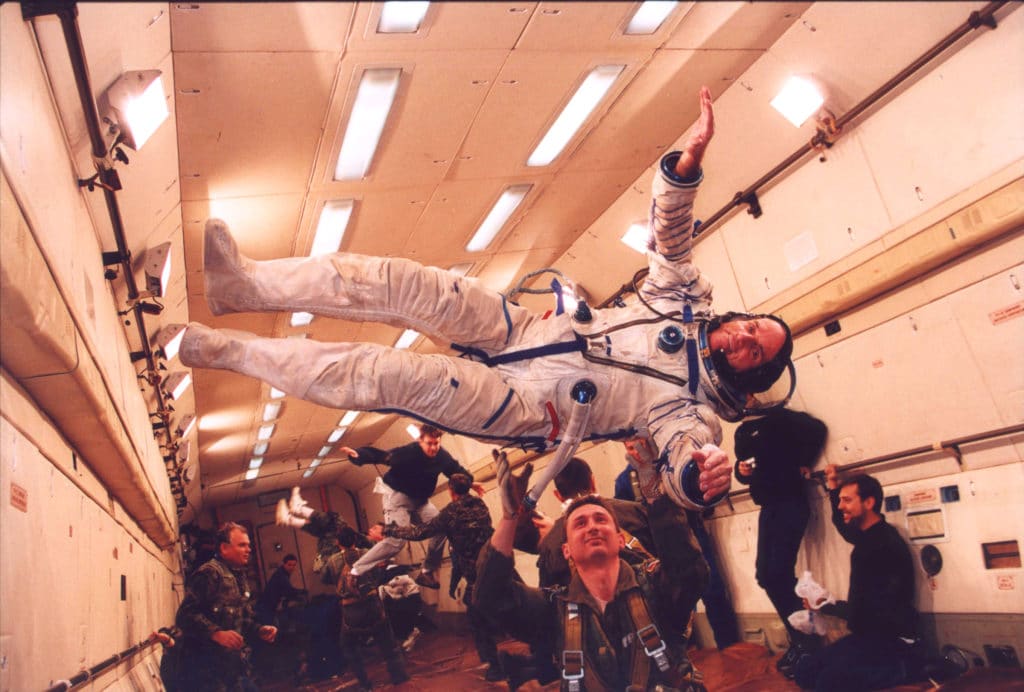
Dennis Tito training for his orbital spaceflight during a parabolic flight
Safety Threat or Politics?
But NASA refused to train Dennis. At that time, NASA believed that civilians would pose a safety threat in orbit. And that Dennis was not properly trained for the flight, not to mention the liability associated with him being on station. Even though non-professional astronauts had launched to space on the U.S. Space Shuttle (e.g. former Senator Bill Nelson), NASA balked at the idea of the Russians taking a tourist to space simply because he was wealthy enough to pay for it.
The simple fact was that the Russian space agency was open for business, their mindset was open to train someone older, someone who was not a career astronaut. They were willing to draft medical and training protocols for a non-professional. NASA knew that age wasn’t a factor in spaceflight as they had flown John Glenn at age 77, three years before.

Dennis Tito continuing his training for his spaceflight
NASA continued to apply pressure for Dennis not to fly as the station was no place for a non-professional. But three days before launch, NASA and the ISS partners relented and provided an exemption for Dennis to visit the space station.
He flew, had an amazing experience, and entered the history books as the first fare-paying private citizen in space! And since Dennis’ historic flight, six additional private citizens have flown to the space station. All of them paying their own way. All of them dedicated to understanding their role and responsibilities. They helped demonstrate that you don’t have to have the ‘right stuff’ to live in space. Dennis led the way. We thank him for his patience, determination, and the dream that he never let die no matter what pressure he and Eric were put under.

Dennis Tito being recovered at the landing site after safely returning to Earth after his eight day spaceflight
Seven private citizens launching to orbit in 20 years may not seem like a lot, but the impact Dennis and his fellow non-professional astronauts has had on the future trajectory of human spaceflight is extraordinary. Ten years ago NASA started the Commercial Crew and Cargo Program, predicated on the notion that private companies could develop new spacecraft to supply NASA and the ISS partners with flights, but also to private customers. From this program came the SpaceX Crew Dragon capsule which has since been purchased for private flights to space. In 2019, NASA put forth a Commercial Use Policy and have sanctioned and endorsed a private mission to the ISS. Finishing their 180 degree turn from the position they took on Dennis’ flight.
“To me, it was a 40-year dream. The thing I have taken away from it is a sense of completeness.”
– Dennis Tito
We’re still waiting on suborbital spaceflight, but the future looks bright for orbital spaceflight opportunities. And it all began with Dennis Tito. He never faltered and neither did we.
To learn more on how Eric seized a Window of Opportunity with Tito’s spaceflight, check out this.


